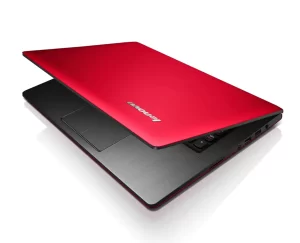Lenovo products have indeed received some criticism regarding their fan management. This may be attributed to their product design prioritizing quiet operation over robust cooling. However, it does not imply that all Lenovo products have this issue, as different product lines may employ varying fan management strategies. If you have encountered overheating or noise issues during usage, consider cleaning the fan or utilizing third-party software for fan control.
The Importance of Fan Management
A key player in the performance and longevity of a computer system is the fan management mechanism. While it might seem like a minor part of the system’s overall architecture, the role it plays is crucial.
The Impact on Computer Performance and Lifespan
The primary function of a fan in any computer system, including Lenovo products, is to keep the components cool. Computer components generate heat, and without adequate cooling, they can overheat, leading to several issues, such as a decrease in performance and potentially irreversible damage.
Moreover, proper fan management can extend the lifespan of the device. By ensuring components are at an optimal temperature, it prevents heat-related wear and tear. This can be particularly relevant for high-performance tasks such as gaming or video editing, where components generate significant heat.
Potential Issues with Poor Fan Management
One of the most noticeable symptoms of poor fan management is noise. Fans might need to spin at high speed to compensate for the heat, leading to a high-pitched whirring sound. This can be a distraction, especially in quiet environments.
Overheating is another issue that arises from inadequate fan management. It not only leads to performance throttling but can also cause system instability, frequent crashes, and even permanent damage to the components. In laptops, overheating can also result in uncomfortable usage due to the heat generated on the device’s underside.
Decoding the Lenovo Fan Management Issues

When it comes to Lenovo’s products, a common complaint from users revolves around fan management.
Main Complaints from Users
The most common complaints about fan management in Lenovo products often revolve around two key issues: noise and overheating.
- Noise: Many users have reported that their Lenovo device’s fans spin at high speeds even during light tasks, causing a lot of noise. This can be quite distracting and frustrating, particularly when trying to focus on tasks that require concentration.
- Overheating: Another common complaint is that the devices tend to heat up significantly during high-performance tasks, leading to discomfort during use, particularly in the case of laptops. Overheating can also lead to performance throttling, where the device reduces its performance to prevent further heat build-up.
You may also like: Which Part Of A PC Makes The Most Noise?
For more user complaints on Lenovo’s fan management, you can refer to Lenovo’s official forum here.
Possible Causes Behind the Issues
While it can be difficult to pinpoint an exact cause without considering each individual case, there are a couple of probable reasons:
- Inadequate Cooling System Design: The cooling system might not be sufficiently robust to handle the heat output, especially during high-performance tasks. This can be due to the fans’ size, number, placement, or even the vents’ design.
- Inefficient Fan Control Algorithms: The software controlling the fan speed, commonly referred to as the fan control algorithm, could be another contributing factor. If the algorithm is too aggressive, it might ramp up the fans too quickly, leading to the noise issue. Conversely, if it’s too conservative, it could result in overheating.
Solutions and Recommendations
If you’re experiencing issues with your Lenovo device’s fan management, don’t despair. There are several steps you can take to mitigate these problems and improve your device’s overall performance and usability.
Cleaning the Fans and Cooling System
One of the most straightforward steps you can take is cleaning the device’s fans and cooling system. Over time, dust and debris can accumulate on these components, reducing their efficiency. A thorough clean could help alleviate some of the issues.
Using Third-Party Fan Management Software
There are several third-party software options that allow you to take control of your device’s fans, such as SpeedFan or Notebook Fan Control. These can provide a more granular level of control over fan speeds than your device’s default settings.
Updating BIOS/UEFI
Sometimes, fan management issues can be due to outdated BIOS/UEFI. Manufacturers often release updates to fix bugs or improve system performance. Therefore, it’s a good idea to check if there are any updates available for your device.
Adjusting Power Management Settings
You can often make changes to your device’s power management settings to help manage the fan’s speed. For instance, setting your device to a power-saving mode may reduce the load on the CPU, thereby reducing the amount of heat produced.
Using a Cooling Pad
For laptop users, a cooling pad can be a viable solution. These devices provide additional fans that help to dissipate heat from your laptop. They can be particularly useful for high-performance tasks or if you’re working in a warm environment.
Please note that these are general recommendations and the effectiveness might vary from device to device. Always ensure that you’re comfortable with the steps involved and consider professional help if necessary.
